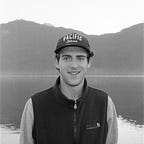Action Research
Welcome to Learning out Loud! This is where CFIL collaborators reflect on what we’ve been learning and trying in this experimental space. Thanks for joining us on our journey, and if you have any thoughts on what you’re reading we’d be happy to hear from you!
Participatory Action Research is collaborative research, education and action used to gather information to use for change on social or environmental issues. It involves people who are concerned about or affected by an issue taking a leading role in producing and using knowledge about it. As described through Transforming Cities from Within, Action research sets aside the idea of a researcher being a neutral observer of a situation and instead acknowledges everyone involved in a process as active co-creators of both research and action. It requires all participants to critically reflect on their role in the process.
The self-feeding nature of action research lends itself to collaboration, especially in the context of CFIL. It’s like an innovation relay race, we run our lap and when the time comes, hand the baton to our partner. They then run their lap (using the baton we handed them) and sure enough, they come back around and kick us off again. This relationship fights off stagnation and allows the design concepts generated (no matter how wild) to be tethered to the participants’ reality.
CFIL utilizes action research on the micro and macro scales. The long-term layout for the lab (below) is structured around these values of testing and learning over many months. Within each of these stages, the same cycle is run on a weekly or daily basis. Plan/ideate, test, learn, re-ideate… etc.
We began our work with the businesses by conducting site visits to their locations. These were an opportunity to not only experience the physical space, people, and food our work would be affecting but understand and see firsthand why they joined CFIL. In order to guide the design team members and create some baseline data we created a workbook to be filled out during the site visits. For most of the team members, it was the first time meeting the business representative and seeing their space. With a couple of weeks of orientation under our belts, we were all eager to get into the field. This eagerness/excitement coupled with the seemingly infinite possibilities that come with the beginning of a project like CFIL created a very long list of questions that we felt we might need the answers to.
When we started putting pen to paper and creating the workbook, many of us found ourselves being pulled between pragmatic/tangible questions and systemic/ethical ones. In an area with so many systemic barriers, directly centred around a very physical entity (food) there was a struggle to find the balance between these and in which ways we question the businesses on these topics.
We ended up splitting the workbook into nine sections starting with a pre-visit reflection and a place to note down assumptions, and ending with a final reflection to be completed after you left the visit. For use during the visit, there were probes for note-taking on the tour: “How would you describe the employee’s relationships?” “How are they expressing their relationship to waste? What are they feeling, saying, doing?”, Empathy, Journey, and Org Chart maps, one on one interview questions, and more.
While the workbook ended up being a helpful resource in a few ways, it became quite apparent that it was much too cumbersome and impractical to try and follow a multipage workbook during a set of very active site visits.
Most ended up ditching the workbook in favour of selective note-taking and sketching, which allowed the workbook to take on its new role of synthesis and organization when we all had a little more time and mental space to sit down and go through our notes.
This experience of attempting to capitalize as much as possible on this face-to-face time with the business participants brought us to the realization that you are never going to get every last morsel of information on your first try. It is inevitable that you will miss a question or that you were presented with something during the visit that you hadn’t thought about. All this leads to more questions after the visit and inevitably requires a follow-up.
As the visits went on we got more comfortable only asking the small handful of questions we knew we wanted answers to immediately and simply letting ourselves absorb what was around us. Deep listening, stream-of-consciousness sketching and writing, and observation took the driver’s seat in many instances. Allowing oneself room to let certain things go and latch onto what struck you in the moment felt the most productive, knowing that the time for analysis and further questioning will come.
Disclaimer: the opinions and perspectives expressed wiyhin each of these posts are solely the author’s and do not reflect the opinions and perspectives of all CFIL participants.
